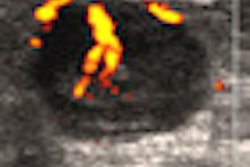Is it a good idea to require radiologists to notify women of their breast density on mammography reports? While there are some merits to the idea, breast density is a complex topic that needs to be handled carefully, according to a new position statement from the American College of Radiology (ACR).
It is well-known that greater breast density results in lower sensitivity for mammography, the ACR statement explains, and the ACR supports the U.S. Food and Drug Administration (FDA) mandate that information on breast parenchymal density be included in the mammography report.
However, the ACR cautioned that it's unclear how patients may interpret breast density information. A handful of states now require such notifications in mammography reports, and others are considering similar legislation.
"While the ACR is not opposed to including breast parenchymal information in the lay summary, we urge strong consideration of the benefits, possible harms, and unintended consequences of doing so," it said.
The association urged consideration of the following:
- The assessment of breast density is not reliably reproducible, which could result in confusion or an impression that mammography lacks reliability.
- For women with fatty breasts, the reporting of density information may convey a false sense of security about negative mammography results.
- The significance of breast density as a risk factor for breast cancer is controversial, and there is no consensus that density per se confers sufficient risk to warrant supplemental screening.
- Including breast density information in a report could result in demands for additional nonmammographic screening such as ultrasound or MRI. Additional imaging can result in an increase in false-positive examinations and benign breast biopsies.
- Unless supplemental screening is reimbursed by insurers, there may be a disparity between women who can afford to pay for the additional screening exam and those who cannot.
Breast density just isn't the whole story, according to Dr. Barbara Monsees, chair of the ACR's Breast Imaging Commission.
"We're not against putting breast tissue density information into patient's lay summaries and doctors' reports," Monsees told AuntMinnie.com. "But we want the FDA, advocacy groups, and the public to know that there are downsides to density notification."
The ACR is drafting a template lay letter for breast density notification that it plans to add to its existing library of sample letters that address other issues, such as BI-RADS category education.
"It's not enough to notify women about the density of their breast tissue; it just doesn't give them enough information to make an informed decision," Monsees said. "Density is a factor and it affects mammography's sensitivity, but we want to be careful what we're telling women. We want to give women the big picture, so they don't walk away either overly concerned or complacent about their breast cancer risk."
The ACR issued the statement in conjunction with its Annual Meeting and Chapter Leadership Conference (AMCLC), which is under way this week in Washington, DC.



















